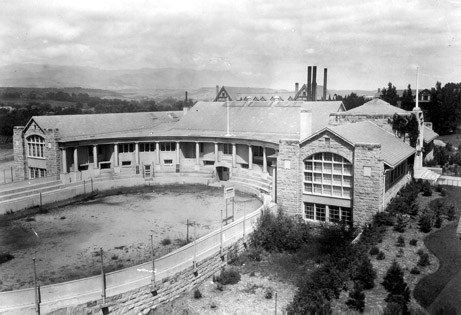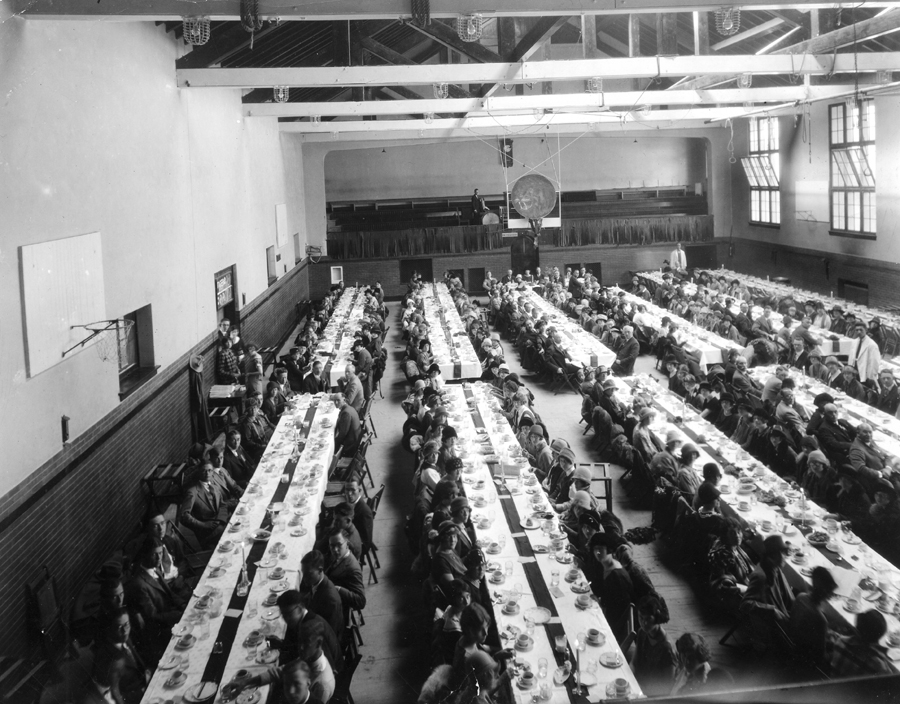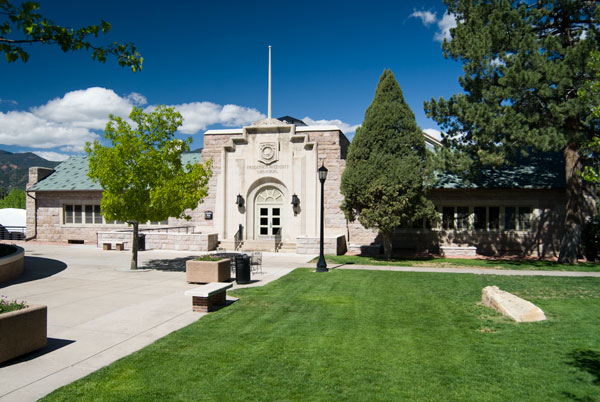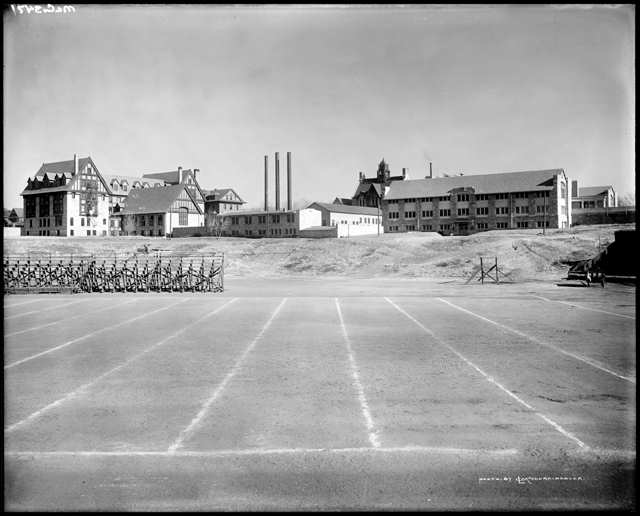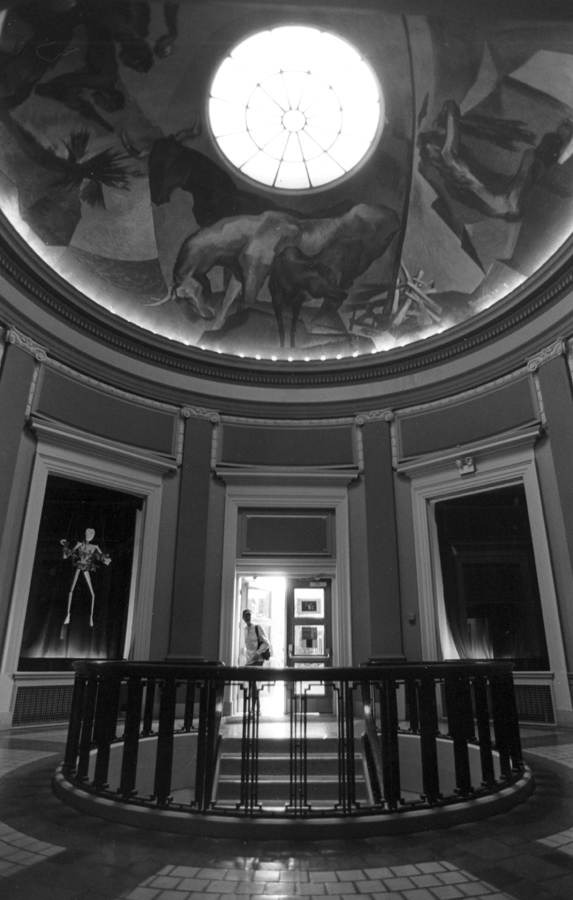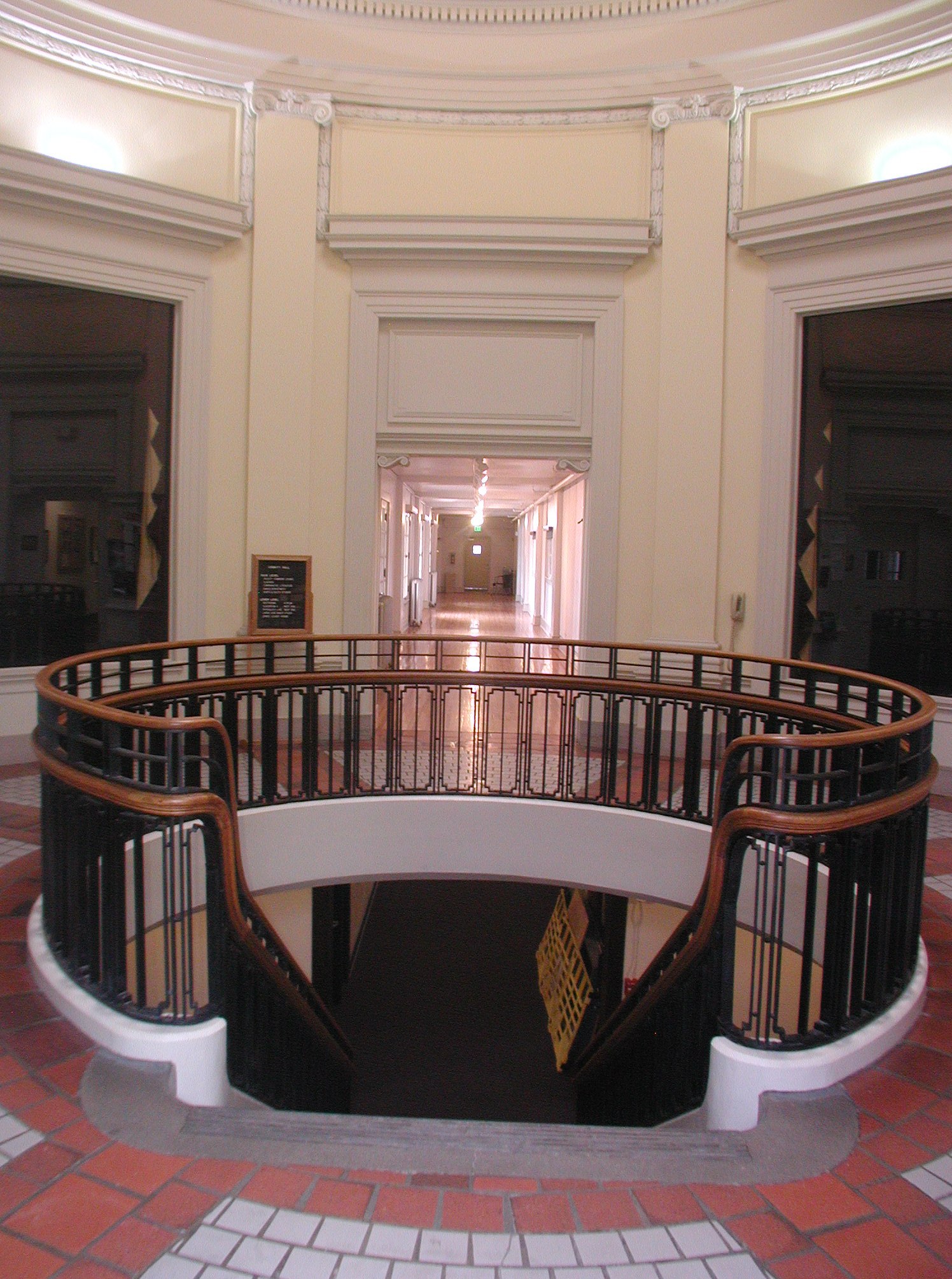Cossitt Hall
Tour Stop: #2
Current Name: Cossitt Hall
Historic Name: Frederick H. Cossitt Memorial Hall
Address: 906 N. Cascade Avenue
Year Completed: 1914
Architectural Style: Neoclassical and Art Moderne
Architect: Maurice B. Biscoe, Denver
Designation: National Register
Access Level: Cossitt Hall is a working building. The public is invited inside, but we ask that ongoing activities not be disturbed.
Historic Preservation Alliance Award
In 2009 Colorado College received an award of excellence from the Historic Preservation Alliance of Colorado Springs for its restoration of the Fredrick H. Cossitt Memorial Hall. The award specifically cites the "historically compatible civil restoration" of Cossitt Hall, 906 N. Cascade Ave.
The Cossitt Hall renovation was a challenge because the building is in near-constant use. Renovation priorities included keeping the historic architecture intact while improving the building's energy efficiency; increasing accessibility; and making effective use of the building's interior spaces.
Cossitt Hall today houses the classics and comparative literature departments, a lounge, three new dance studio/classrooms, offices for dance professors, new locker rooms, practice areas and green rooms for the dance program.
The 1914 Frederick H. Cossitt Memorial Hall filled a long-felt need for a building that would provide athletic and social facilities for the men students of the college. The building's eclectic design contains Neoclassical and Modernistic elements, while its materials combine the Castle Rock rhyolite found on several of the major historic buildings of the college with concrete components used in many later campus buildings. Completion of Cossitt ended the period of major development during William F. Slocum's presidency, which saw greatly expanded and improved campus facilities, recruitment of a distinguished faculty, growth of the student body, and recognition of the college's national reputation. Cossitt was the last building erected on campus until Shove Chapel in 1931.
After completion of necessary academic and residential buildings, interest in providing adequate athletic facilities at the college grew rapidly. In 1891, a simple frame structure paid for by student subscription was erected west of Hagerman Hall and utilized by men students and the college sports teams. Women gained their first access to physical education facilities in 1903, when McGregor Hall opened with a small gymnasium in the basement.
By 1909, support for the construction of a men's multi-purpose gymnasium gained momentum in the college community. The Tiger student newspaper editorialized about the specter of "grinds," students who focused on academics to the exclusion of physical activity and died at an early age. The campus rallied in support of a building where athletes could train and supporters gather to engage in booster and pep activities.
Students staged drives to marshal support for such a building, but the campaign relied on the fundraising prowess of President Slocum to gather most of the large sum required. Slocum persuaded a distant New York cousin, Helen Cossitt Julliard, a resident of New York, to donate the entire $113,000, with the provision that previously-raised funds would go to other campus projects. Mrs. Julliard, whose husband's family had ties to the Julliard School of Music, asked that the building be named after her late father, Frederick H. Cossitt, who had been prominent in New York real estate, insurance, and banking.
The college selected Denver architect Maurice B. Biscoe, who had prepared plans for 1908 Bemis Hall, to design the building. Biscoe moved to Denver from Boston in 1905 to oversee the construction of Denver's St. John's Cathedral and subsequently opened his own office there, working on such commissions as the Dickinson Branch Library and Clayton School for Boys, as well as buildings at the Myron Stratton Home in Colorado Springs. In 1920, the architect returned to Boston and joined the firm of Andrews, Rantoul and Jones, the successor to Andrews, Jacques and Rantoul, which had designed 1904 Palmer Hall at Colorado College.
At the groundbreaking for Cossitt Hall in April 1913, President Slocum emphasized the importance of athletics in the college curriculum:
The gymnasium with its scientific physical training should be a part of the education of every man and woman, just as much a part as his mathematics, English, or philosophy. One is just as important as the other, and therefore should have just as much recognition in college standing and credit . . . . This building has just as sacred a mission as a church, a lecture hall or a library.
Cossitt Hall, dedicated in June 1914, included a basketball court, training rooms, locker facilities, and shower rooms. The presence of the new gymnasium with spectator seating stimulated campus interest in basketball, and beginning in 1922 the college teams won Rocky Mountain Conference championships for four consecutive years. An oval stadium ("Cossitt Bowl") projecting from the south end of the building featured tiered seating and was used as an outdoor running track, playing field, site for pep rallies, and theater. Cossitt Hall also functioned as a social center or men's club, with a 200-person capacity dining room, a kitchen, a common room for informal gatherings and reading, and a large room for student meetings. A pool table was located in the basement. The college adopted a three-year physical education requirement for graduation after the completion of the facility.
After Cossitt opened, all men students, including those living in fraternity houses, were required to take their meals in the new hall. The Colorado Springs Gazette viewed the building as a democratizing factor in student life because men of all ranks and classes came together for dinner and social activities in the lounge. The Middle-West School Review favorably profiled the building in 1915 and observed:
The work carried on in the Cossitt Memorial thus touches the life of the students at many points. . . . New men gather about the piano to learn the college songs, and old and new meet to practice college cheers, thus gaining the common touch and viewpoint which goes a long way to make that subtle thing called 'college spirit.'
The college initially prohibited smoking and playing cards in the Cossitt lounge, prompting students to stage the first organized protest in the history of the campus. A board created for governance of the hall, composed of faculty, alumni, and students, quickly overturned the rule.
This Building
in History:
When President E. P. Tenney took over the inchoate Colorado College in 1876 (the summer of Custer's Last Stand, of the Nation's Centennial and of Colorado's statehood), his first educational move was to hire W. D. Sheldon and send him to Colorado Springs to begin instruction in classics.
Over the years Cossitt Hall housed a variety of activities. During World War I in 1918, the more than 500 men assigned to the Army Signal Corps School at the college were quartered in the gymnasium and served meals in the Cossitt dining room. The Julliard Room at Cossitt Hall became the meeting place for the college's C Club. The group, organized in 1919, brought together men interested and accomplished in athletics. As early as 1914, the senior class staged Euripides' "Electra" in Cossitt Bowl during commencement, and in the 1920s and 1930s several plays were presented there by the Classics Club.
In 1941, Colorado College President Thurston Davies invited dance artist Hanya Holm to campus to lead a summer dance school. For 43 summers Holm conducted an eight-week course in dance, mostly taught in Cossitt Gymnasium. Former student Claudia Gitelman recalled that the floor "had a mellow patina just right for the bare feet of the dancers. High windows let in the light needed in daytime." Holm, a native of Germany, studied under Mary Wigman before coming to America in 1931. She became a leading dance artist and was one of four principal teachers at a summer dance school at Bennington College before starting the Hanya Holm-Colorado College Summer School of the Dance. In the 1950s and 1960s, she developed choreography for "Kiss Me Kate," "My Fair Lady," and "Camelot" on Broadway. At the peak of Holm's summer dance school in the 1960s and 1970s, the tuition generated by her classes reportedly "carried" the rest of the summer program. During the 1965 summer session, many former students who had attained prominence in dance returned to honor Holm with a week-long series of performances. In 1983, citing declining enrollment and other factors, the college abruptly terminated Holm's association with the institution, a decision widely regretted in the dance world.
In 1948, artist Eric Bransby painted a mural in the entrance rotunda of Cossitt. "Settlement of the West" depicts goldseekers, migrating settlers, the cattle industry, and trappers and traders. Born in Albany, New York, in 1916, Bransby studied at Colorado College and taught at Yale University, the University of Illinois, Western Illinois University, and the University of Missouri. Other Colorado Springs area sites with murals executed by Bransby include the Colorado Springs Medical Center, U.S. Air Force Academy Planetarium (later installed at the Colorado Springs Municipal Airport), Air Defense Command Headquarters, and the Colorado Springs Pioneer Museum. In 2002, Bransby, then in his eighties, returned to restore his mural in Cossitt's rotunda.
Cossitt's dining room closed in the mid-1950s after completion of Taylor Dining Hall at Bemis Hall. Cossitt Bowl was demolished in 1957, and Honnen Ice Arena occupied part of the site in 1963. Cossitt Hall continued to serve as the focal point of the college athletic program until 1970, when the El Pomar Sports Center was constructed. Cossitt Hall briefly became a center for women's athletics. Today, the building houses the departments of Drama and Dance and Classics and Comparative Literature. Cossitt Hall was listed in the National Register of Historic Places in 1997 in recognition of its historical and architectural significance.



